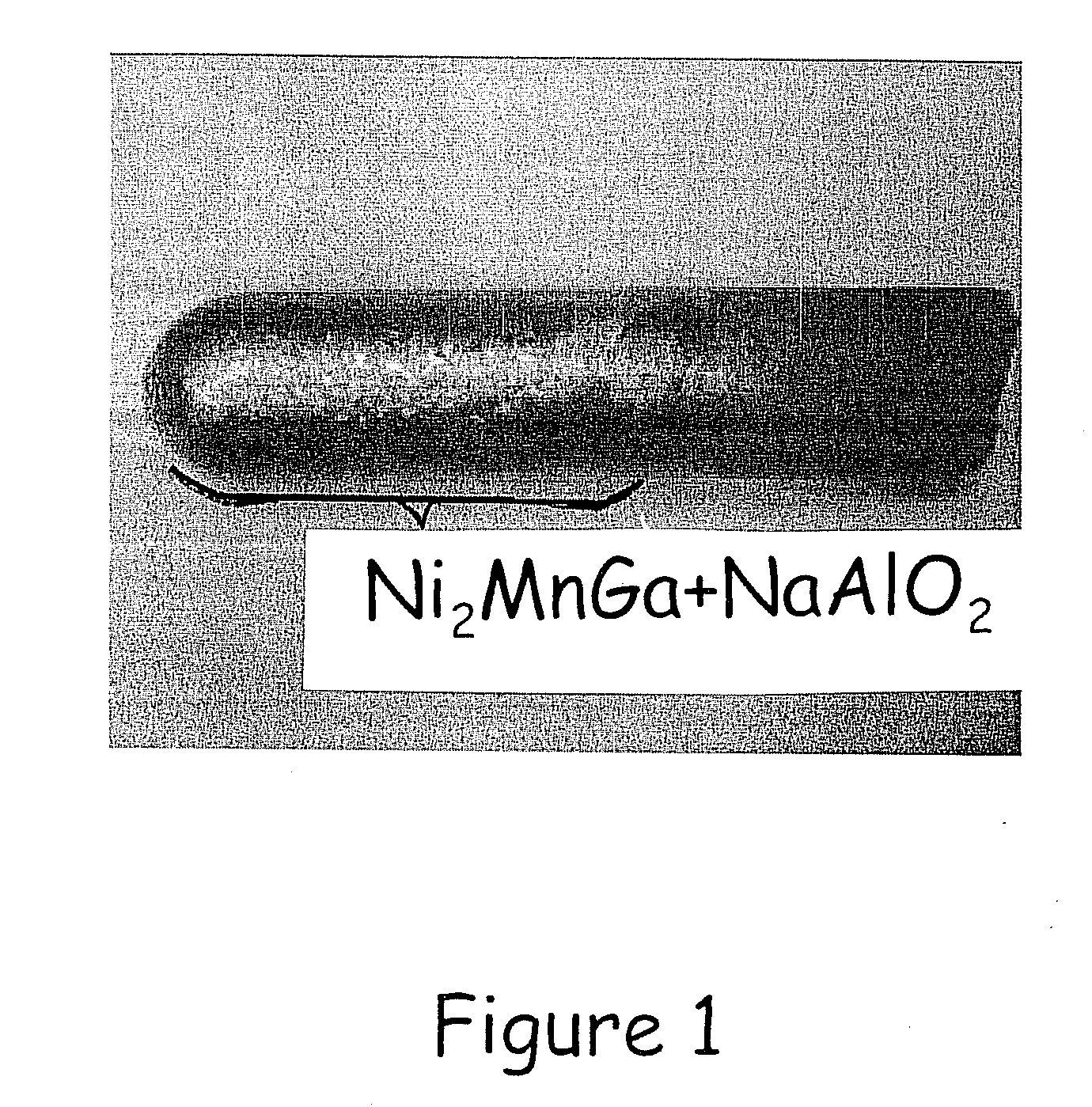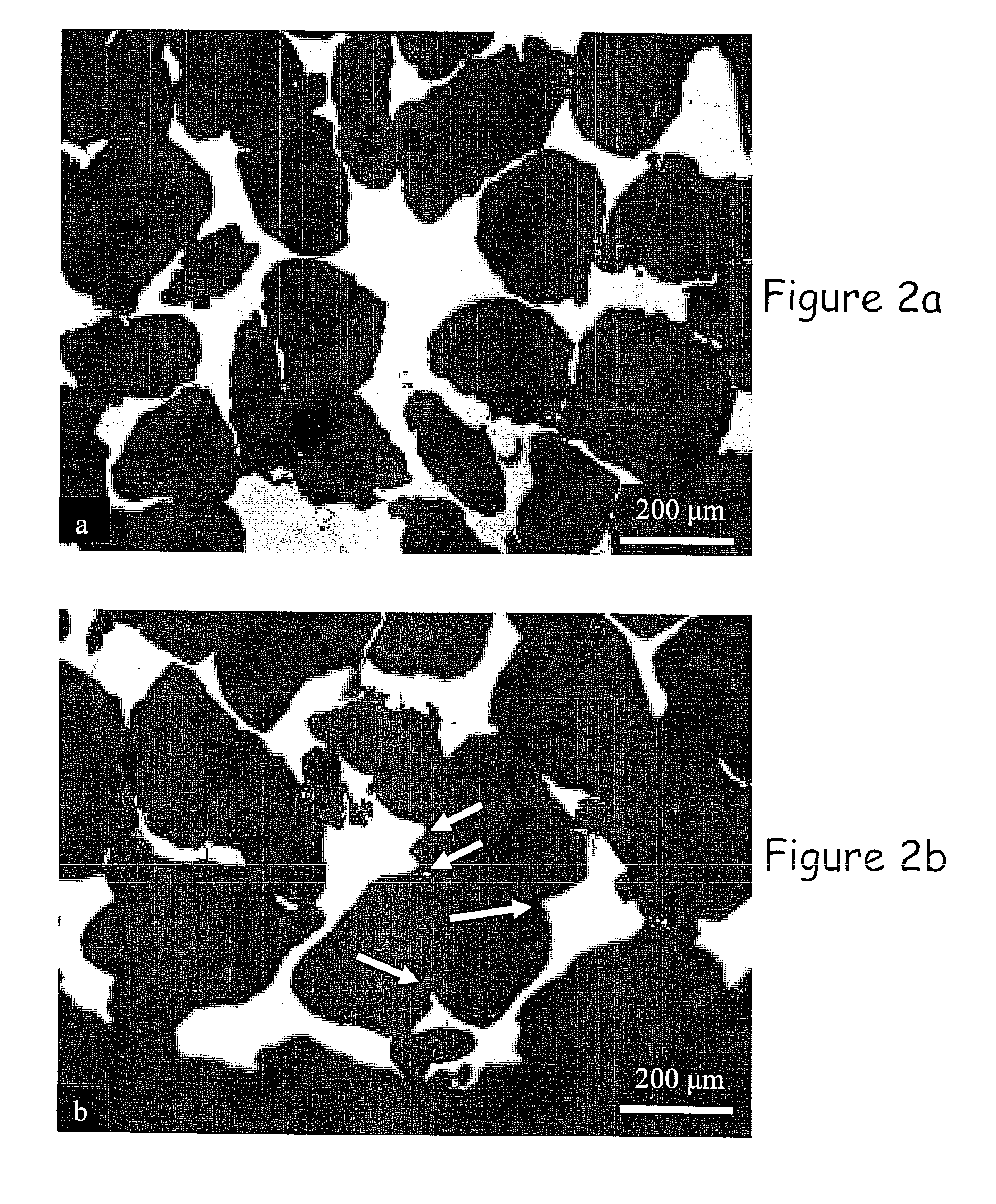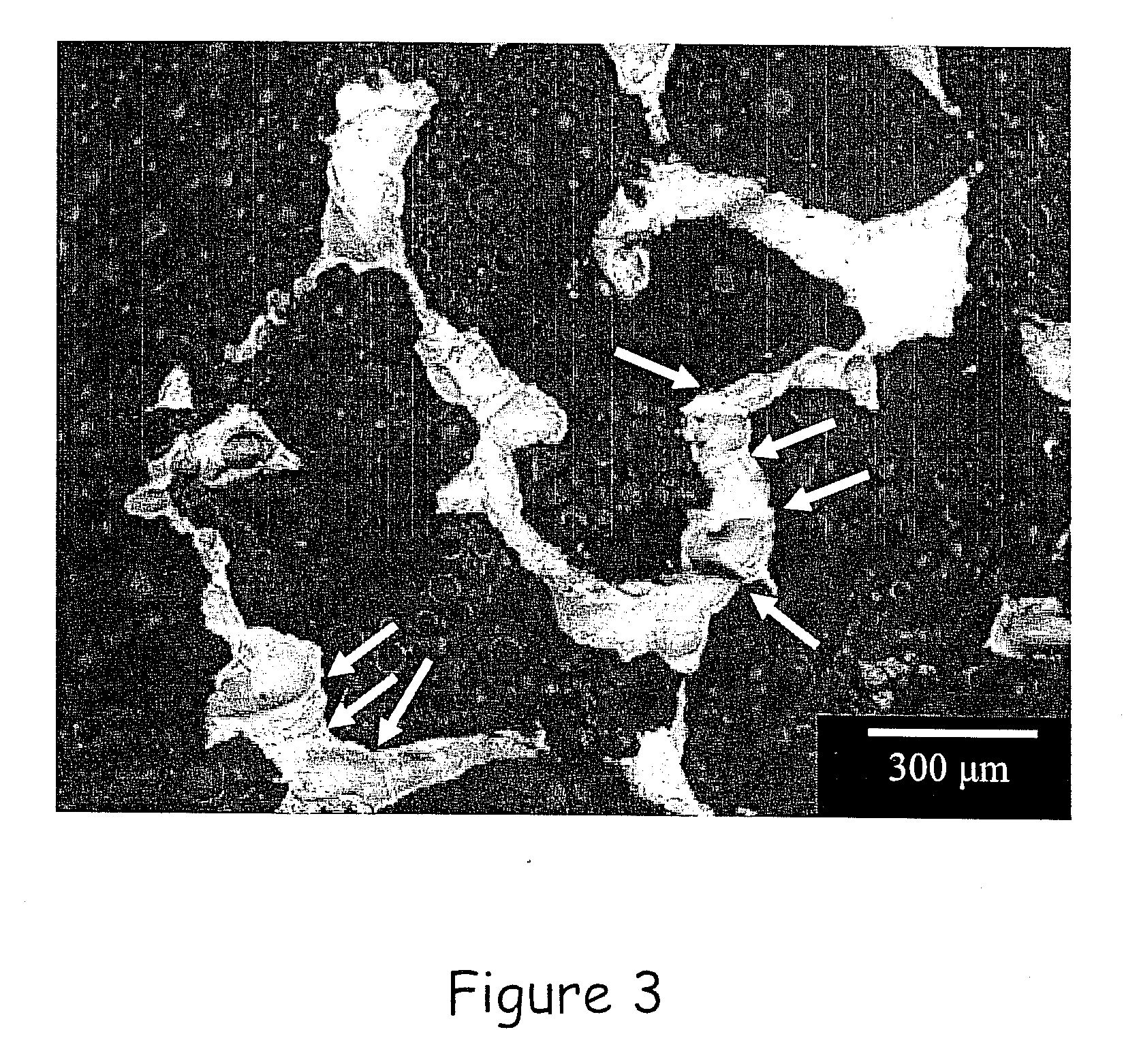Magnetic material with large magnetic-field-induced deformation
a magnetic field and magnetic material technology, applied in the direction of magnetic materials, magnetic bodies, transportation and packaging, etc., can solve the problems of high price, difficult single crystal growth, slow growth, etc., and achieve the effect of strong strut respons
- Summary
- Abstract
- Description
- Claims
- Application Information
AI Technical Summary
Benefits of technology
Problems solved by technology
Method used
Image
Examples
Embodiment Construction
[0022]Ni2MnGa replicated foams with open-cell porous structure were processed by the replication technique where a metallic melt is cast into a bed of space-holder materials that is leached out after solidification of the melt, resulting in open porosity replicating the structure of the space-holder. This method allows the creation of foams with fully-dense struts without macroscopic distortions. This method necessitates the selection of a space-holder with higher melting point than the alloy, very low reactivity with the melt and good removal ability. This technique has been used for low-melting alloys such as aluminum (typically using NaCl with a 801° C. melting point as space-holder) and has been recently demonstrated for foams created with higher melting alloys based on zirconium (using BaF2 as space-holder) or nickel (using NaAlO2). In the present work, the processing follows the general procedures described in Boonyongmaneerat Y, Chmielus M, Dunard D C, Müllner P, Physical Rev...
PUM
| Property | Measurement | Unit |
|---|---|---|
| thickness | aaaaa | aaaaa |
| melting point | aaaaa | aaaaa |
| liquidus temperatures | aaaaa | aaaaa |
Abstract
Description
Claims
Application Information
 Login to View More
Login to View More - R&D
- Intellectual Property
- Life Sciences
- Materials
- Tech Scout
- Unparalleled Data Quality
- Higher Quality Content
- 60% Fewer Hallucinations
Browse by: Latest US Patents, China's latest patents, Technical Efficacy Thesaurus, Application Domain, Technology Topic, Popular Technical Reports.
© 2025 PatSnap. All rights reserved.Legal|Privacy policy|Modern Slavery Act Transparency Statement|Sitemap|About US| Contact US: help@patsnap.com



